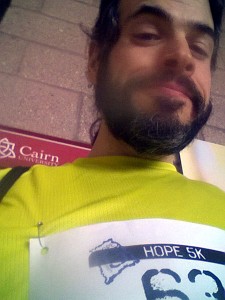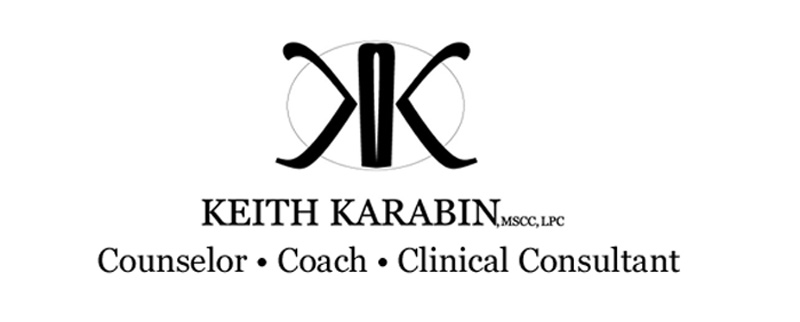The Bully and the Mirror
“Bullying builds character like nuclear waste creates superheroes.
It’s a rare occurrence and often does much more damage than endowment.”
-Zack W. Van, Author of Inanimate Heroes
It was the week after New Years and I was terrified. Sure, I tried to smile and accept the praises of those around me, and those on Facebook, but I was struggling the birth pangs of a realization, cramping in fear and disappointment while I wrestled with the simple, lying insanity of my irrational belief. I had done “everything right” in terms of my plan for loving the holiday season—fun, family and food—but I’d still gained .8 of a pound. Yes, only eight tenths of a pound. But it was threatening to steal the joy of, truly, the best holiday season I’d ever had.
I was disappointed in myself and I knew that there was no logical reason for it. I was afraid and I couldn’t say why. I knew it was hurtful and dangerous to my continued health, it was very real and very powerful, but I didn’t have any idea what it was.
It was a “‘Fatty in Recovery’ thing,” according to Lisa Delaney and “…definitely describes the period of adjustment you need to go through after such a dramatic life change.” Delany “is one of the rare souls who know what it’s like to be an “after,” according to her biography (2011). She is a journalist and author of Secrets of a Former Fat Girl who has gone through, and is still going through the change in self identity that I am now experiencing.
This website is, at its core, about overcoming the negative in ourselves to live as the strong, healthy people that we know we are inside. It doesn’t matter if it’s eating and weight (like me), depression, anxiety, addiction or whatever. At its core, this change is a change of identity. Seeing ourselves healthily, and thus living healthily. However, that New Years week, I found an old bully armed with forgetfulness and fear. “One of the things that makes it hard for us to see ourselves as we’ve become is the gradual nature of the changes we’ve experienced…Over the months and years it takes to [change your self] it’s easy to forget what we looked and felt like…and how different we look and feel now” (Delany, 2011).
My fear was that the .8 of a pound when I had “done everything right” meant that my changes were only temporary. That my healthy self was one step away from a set of 400lb chains, and always would be. My year of weight loss didn’t matter in that moment, or my near-year of maintenance. In that moment the me that I am was only a two-year old facing a terrible 36 year old bully who knew all of my secrets and the best buttons to press.
It’s been four months since I met my bully. I know you have yours. Let’s fight back together.
Calling Out the Bully
“Life is a fight, but not everyone’s a fighter.
Otherwise, bullies would be an endangered species.”
-Andrew Vachss, Terminal
I had two thoughts in my head; a true new thought and a false Bully thought. True New: “It’s less than a pound, you’re doing great!” False Bully: “This healthy you isn’t real, it’s just a fluke. You will fail and you’re failing right now.” The conflict and the fear were due to both of these thoughts competing for attention and dominance. This conflict is called “cognitive dissonance” or “the feelings of discomfort that results from holding two conflicting beliefs” (Cherry, 2014). Most cognitive dissonances arise as Psychologist Leon Festinger first discovered them; between what we think and what we do, like “I’m eco-friendly” but I drive a fumy gas-guzzler or “Smoking is bad for you” as I light up another one. In traditional cognitive dissonance the bully is the behavior.
For me and other newly healthy people, the bully is no longer the behavior; the bully is the former self-image, the past identity. My coach at Abington Weight Management was vital in my fight against my bully and in those first fights I found a name for him. Not cognitive dissonance, identity dissonance.* Delany lived it, too. “It was very difficult at first to trust that I wouldn’t just slip back into my old, unhealthy ways. It took me a long time to get comfortable…” and she’s been maintaining her healthy life for over 20 years (2011).
Once the behavior has been addressed, dealing with Identity Dissonance is related to the journey we are on now and who we are now on that journey. “Doubts about your competence, attractiveness, worth, or essential goodness may desperately require reassessment and revision in light of all the knowledge and experience you’ve gained…” says Dr. Leon F. Seltzer, “It’s almost inevitable that your behavior will continue to be governed by distorted, deprecating messages you received about yourself” until we stand up to them (2011).
Delany agrees that identity is key. “My issues are less about how I look physically but more about the emotional issues that led to my being overweight in the first place: the self-sacrificing, perfectionism, the difficulty I have dealing with stress that makes me reach for food” (2011).
Punching The Bully in the Face
“One day…I put my hand around my wrist, middle finger to thumb…I wasn’t big-boned, after all.
This simple little act helps me counter the fun-house image I may see when I look in the mirror.”
-Lisa Delany, Author and Former Fat Girl
 Identity Dissonance is awesome. What? Surprised after all my talk about the disappointment and fear that it took to see it? Nope, it’s awesome because, as Festinger noted about cognitive dissonance, “when there is a discrepancy between beliefs and behaviors, something must change in order to eliminate or reduce the dissonance…which leads to activity oriented toward dissonance reduction just as hunger leads toward activity oriented toward hunger reduction” (Cherry, 2014). Simply put, when we’re hungry; we eat. When we have conflicting views of ourselves, we pick one and feed it. I was just noticing hunger pains of the self image.
Identity Dissonance is awesome. What? Surprised after all my talk about the disappointment and fear that it took to see it? Nope, it’s awesome because, as Festinger noted about cognitive dissonance, “when there is a discrepancy between beliefs and behaviors, something must change in order to eliminate or reduce the dissonance…which leads to activity oriented toward dissonance reduction just as hunger leads toward activity oriented toward hunger reduction” (Cherry, 2014). Simply put, when we’re hungry; we eat. When we have conflicting views of ourselves, we pick one and feed it. I was just noticing hunger pains of the self image.
I work with kids every day who have spent months, even years living healthy beyond depression, anxiety, cutting, suicide, drugs, sexual trauma and neglect—but their old bullies are many years older than them and their healthy self images are just as new and just as hungry for healthy nourishment. You may be the same.
You pick the identity that you want to feed. New Healthy You or Old Bully You? I know which one I’m feeding. I’m choosing to make my healthy self stronger. We feed our healthy self by “asserting your adult prerogative to interpret anew the various things that happened to you when you were much younger–to correct the faulty understandings that eventuated in negative ideas you still have about yourself” and to live that every day in as many ways as you can (Seltzer, 2011).
 Delany offers many suggestions to fight forgetfulness and remind ourselves that we are, and will remain healthy. She recommends getting out the old photo albums or old journals. I suggest taking a look at your old Twitter Feed, Facebook or MySpace pages. Physical examples like old “fat clothes” or that gross pair of “comfy” pajamas that used to be like a second skin when depressed or isolating can also be great reminders of your journey.
Delany offers many suggestions to fight forgetfulness and remind ourselves that we are, and will remain healthy. She recommends getting out the old photo albums or old journals. I suggest taking a look at your old Twitter Feed, Facebook or MySpace pages. Physical examples like old “fat clothes” or that gross pair of “comfy” pajamas that used to be like a second skin when depressed or isolating can also be great reminders of your journey.
Sometimes looking outside yourself is helpful. I had my coach, Delany suggests a professional shopper to help confront the “whole ‘I can’t wear that’ refrain still running through our heads…” and in “figuring out how to dress our new bodies” not “stick with the styles and even sizes we wore when we were heavy” (2011). Family and friends are always willing to remind us how healthy we’ve become.
Finally, the best way to face your Old Bully is to stare them down on their turf with your new skills in hand. “Chances are the changes you’ve undergone aren’t all about the size of your jeans,” Delany said. Or your depression, anxiety, or trauma. “Do you have more confidence now? Better boundaries? Are you more willing to take risks—state an opinion, say no, share an idea? Think about a recent example of your newfound confidence, and try to channel how you would have reacted in your previous life…” (2011).
For me, as many of you know, running serves that purpose. Recently, I brought that strength of running right back to my Bully’s turf while supporting the fight against Human Trafficking in the Hope 5K at Cairn University. That is where these pictures are from. I swelled to my 400 pound worst weight through unhealthy habits that I allowed in my life while working 50 hour weeks as a fleet manager and in full time graduate study at Cairn (then Philadelphia Biblical) University.
I specifically chose to do my Spring 5K at Cairn so that I could run across the campus which I had been unable to walk across without stopping. The pictures you see are some of the places which I, huffing and aching, would rest and feel sorry for myself. I blew past them this month, hitting the finish line with my best time yet. At the end I found the sign below that said “No more chains!” I laughed and laughed. They meant no more human slavery, I laughed because I felt my 400lb chains lifting, maybe for good.
I laughed because I showed myself that my Old Bully may be older, but he’s weaker. I am strong enough to fight and I will do it again.
And so will you.
__________________________________________________
Cherry, K. (2014). What Is Cognitive Dissonance? About Psychology. Retrieved from: http://psychology.about.com/od/cognitivepsychology/f/dissonance.htm
Delaney, L. (2011). Adjusting to Weight Loss — Expert Q&A. Retrieved from: http://spryliving.com/articles/weight-loss-adjustment/
Seltzer, L. (2011) The Past: Don’t Dwell on It, Revision It! Part 2. Psychology Today. Retrieved from: http://www.psychologytoday.com/blog/evolution-the-self/201108/the-past-dont-dwell-it-revision-it-part-2
*I researched the heck out of “Identity Dissonance” and could find no studies, mentions or theories about it. Therefore, it’s mine, I called it! Please, let me know if you have coined the term, or know who did and I’ll rescind my claim, but for now © KeithKarabin.com 2014, baby!



